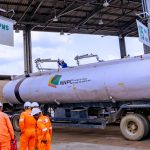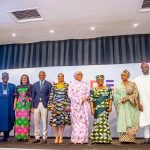World
Why Africa is a Priority for Russia’s Rosatom
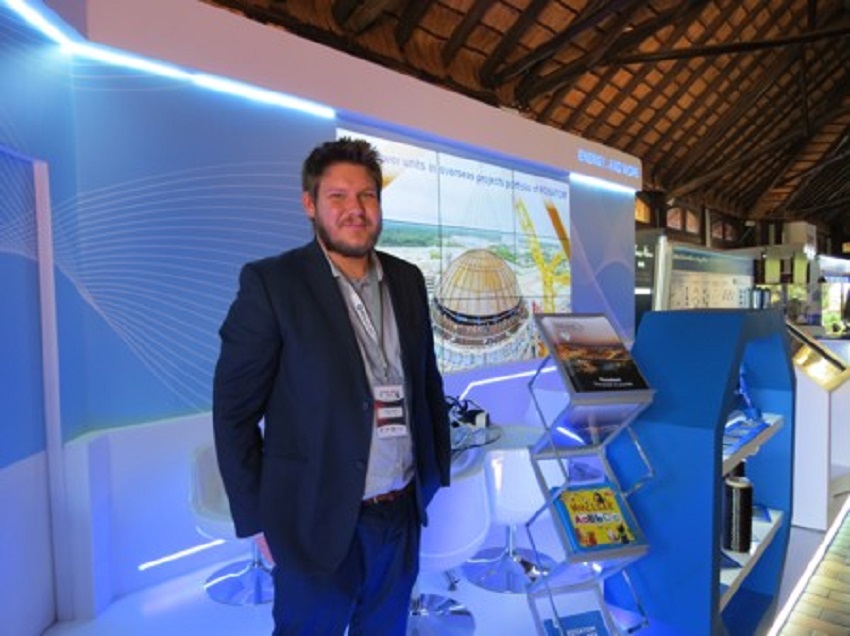
By Kester Kenn Klomegah
After the first Russia-Africa summit held in Sochi, authorities have been moving to build on this new chapter of Russia’s relations with African countries.
As set in the joint declaration, the two sides have outlined comprehensive goals and tasks for the further development of Russia-Africa cooperation in significant areas including science and technology.
Business interest in Africa is steadily increasing and Russian companies, among them Rosatom, are ready to work with African partners.
It is largely acknowledged that energy (construction and repair of power generation facilities as well as in peaceful nuclear energy and the use of renewable energy sources) is an important area of the economic cooperation between Russia and Africa.
Ryan Collyer is the Chief Executive Officer (CEO) of Rosatom Sub-Saharan Africa, and his key responsibilities include overseeing, implementing and managing all Russian nuclear projects in the Sub-Sahara African region.
In this insightful and wide-ranging interview with Kester Kenn Klomegah in early April 2021, Ryan Collyer discusses efforts toward providing nuclear power, training of nuclear specialists, the main challenges and the future plans for Africa.
Here are the interview excerpts:
Even before the first Russia-Africa summit held in October 2019, several African countries have shown a keen interest in building nuclear power plants. What is the current situation (overview) moving from mere interest to realizing concrete results in Africa?
It is important to note that nuclear is not new to Africa and Africa is not new to nuclear. South Africa has successfully operated Safari 1 research reactor for over 55 years and Koeberg nuclear power plant for over three decades. At one point, South Africa was the second-largest exporter of the life-saving medical isotope, Molybdenum 99, in the world. There are also currently research reactors in the Democratic Republic of Congo, Nigeria, and Ghana.
Another source is the cooperation with the International Atomic Energy Agency. Thanks to that, many countries like Benin, Ethiopia, South Africa, Tanzania, Zambia, and others benefit from modern nuclear technologies applications in healthcare and agriculture. In Zambia, a cancer disease hospital received much-needed support, and now over 20,000 patients have been diagnosed and treated at the hospital. Benin’s soybean farmers could triple their income using the benefits of nuclear irradiation. In Tanzania, its island of Zanzibar became tsetse-free thanks to the Sterile Insect Technique (SIT).
Many other African countries are already working on joining the atomic club in one form or another, whether it be the construction of a Nuclear Power Plant or a research reactor or the development of nuclear infrastructure or the training of professional personnel. In this undertaking, Russia is a trusted partner for many. We have signed intergovernmental agreements in the peaceful use of atomic energy with Algeria (2014), Ghana (2015), Egypt (2015), Ethiopia (2019), the Republic of Congo (2019), Nigeria (2012, 2016), Rwanda (2018), South Africa (2004), Sudan (2017), Tunisia (2016), Uganda (2019) and Zambia (2016). Memoranda of Understanding (MOUs) were signed with Kenya in 2016 and Morocco in 2017.
How would you estimate the potential nuclear energy requirements in Africa? How is that compared to other alternative power sources such as solar and hydro-power?
Today, 600 million people in sub-Saharan Africa (one-out-of-two people) do not have access to electricity. Any significant change is not forthcoming, according to the International Energy Agency (IEA). Estimations show that 530 million people (one-out-of-three people) will remain without electricity in 2030. As GDP growth and urbanization in Africa escalate, the power demand will increase exponentially. Today the electricity demand in Africa is 700 terawatt-hours (TWh), with the North African economies and South Africa accounting for over 70% of the total.
According to the IEA estimate scenarios, by 2040, the electricity demand will more than double in the Stated Policies Scenario to over 1600 TWh. It may reach 2300 TWh in the Africa Case Scenario. It is undeniable that Africa needs vast amounts of sustainable energy to transform societies, grow economies, and reduce the global carbon footprint.
No single source of electricity can provide these amounts and considerably lower greenhouse emissions. A healthy mix of several intermittent and baseload options can satisfy these criteria and allow for the economy and society’s prosperity. The top-5 performers in the Energy Trilemma Index by World Energy Council have a combination of both nuclear and renewable resources to balance all three dimensions: equity, security, and environmental sustainability, thus enabling their prosperity and competitiveness. For example, Switzerland has over 30% nuclear, Sweden roughly 40% nuclear, Finland – 18%, and France – over 70% nuclear.
Apart from energy poverty, nuclear can solve other continent problems, from low industrialization to advances in science, healthcare, and agriculture, thus propelling the continent towards the African Union’s Agenda 2063 Master plan, which envisions Africa’s transformation into the global powerhouse of the future. So, we are advocating a diverse energy mix that utilizes all available resources, including renewables and nuclear, to ensure climate resilience and environmental safety, social equity, and supply security.
Can you discuss concretely the planned nuclear projects in South Africa, Zambia and Egypt? Say why these have still not taken off as planned, the necessary agreements have been signed though?
Our plans for projects in Egypt and Zambia are proceeding at the pace acceptable for both parties. In Egypt, we plan to commission four power units with VVER-1200 type reactors with a capacity of 1200 MW each by 2028. We will also supply nuclear fuel throughout the entire NPP life cycle (60 years), provide training services, and carry out maintenance and repairs within ten years after each unit’s start. With our initial agreement signed in 2015, and necessary infrastructure still being put in place, the El Dabaa project is firmly underway.
Our project in Zambia, Center for Nuclear Science and Technology, is implemented in several stages, starting with a Multipurpose Irradiation Center. Once the Center is built, a training complex within it will contribute to building capacity in nuclear technology by providing opportunities for training students of different degrees from Bachelor to PhD and carrying out advanced experiments and research that provides a new level of practical competencies. With Zambia being new to nuclear, the installation of infrastructure is the key priority at the moment.
As for South Africa, we maintain a cordial working relationship with crucial nuclear industry bodies and are monitoring their ambitions to add 2500MW of new nuclear to the grid very closely, but we are not currently engaged in any active nuclear projects. The initial 9600MW nuclear new build program in South Africa was halted in 2017 as a result of internal procedural issues of the country. It is important to note that the 9600MW program did not make it past the Request for Information (RFI) stage, and Rosatom was only one of many vendors interested to bid for the project. The program was then downsized to 2500MW and restarted in 2020 as the country grapples with power shortages due to an ageing coal-fired fleet.
To what extent, the use of nuclear power safe and secured for Africa? What technical precautions (measures) can you suggest for ensuring nuclear security?
A nuclear power program is a complex undertaking that requires meticulous planning, preparation, and investment in time, institutions, and human resources. The development of such a program does not happen overnight and can take several years to implement. All countries, which embark on the path towards the peaceful use of nuclear technologies, do so by adopting the IAEA Milestone Approach framework. This approach provides newcomer countries with well-structured guidance and a clear to-do list, which gives them a clear understanding of how to safely and effectively implement and manage their civil nuclear program. This approach includes necessary policy and legal framework, human capital development, installation of management and regulatory bodies, implementation of safeguards, and educating the public.
Since many of our partners are relatively new to the technology, we are able to provide full support to them on their path towards achieving their national nuclear energy programs, this at all of its stages of the project and in full accordance with IAEA regulations.
Do you also envisage transferring technology by training local specialists and how does this currently look like, how many specialists per year undergoing training in Russia?
The ultimate goal in our projects is to help our partners gain independence in terms of human capital. Still, it will need at least a decade of education and training of many young people and professionals.
As part of our commitment, we assist our partner countries with training local personnel via a government-sponsored bursary program by the Russian Ministry of Science and Higher Education. Since 2010, hundreds of students from Algeria, Ghana, Egypt, Zambia, Kenya, Nigeria, Tanzania, Uganda, Ethiopia, and South Africa have been receiving nuclear and related education at leading Russian educational institutions. Currently, over 1500 students from Sub-Saharan Africa study in Russia under bachelor, master and post-doc programs, 256 students are on nuclear and related programs.
Another aspect is short-term training for professionals – managers and specialists in nuclear. The topics of training range from nuclear energy, technology management and technical regulations to safety features of Russian designs in nuclear.
In your view, why many African countries opting for renewable energy? Is nuclear power affordable for Africa? With this trend, what is Rosatom’s plan for future cooperation with African countries?
Currently, renewables show the fastest-growing curve in meeting this demand with the solar potential of 10 TW, the hydro of 350 GW, the wind of 110 GW, and the geothermal energy sources of 15 GW. Many are easy to install and demand little in terms of investment.
However, the critical question regarding these sources is reliability. US Energy Department estimates show that nuclear power plants produce maximum power over 93% of the time during the year. That’s about 1.5 to 2 times more than natural gas and coal units and 2.5 to 3.5 times more reliable than wind and solar plants. To replace a nuclear power plant, one would need two coal or three to four renewable plants of the same size to generate the same amount of electricity onto the grid.
Another critical question is the cost. Most of the funds are needed during the construction period. Building a large-scale nuclear reactor takes thousands of workers, massive amounts of steel and concrete, thousands of components, and several systems to provide electricity, cooling, ventilation, information, control and communication. However, apart from a reliable source of electricity throughout several decades (from 40 to 60 years minimum), the International Energy Agency (IEA) estimates that the construction of new NPPs is competitive compared to other green energy sources like wind and solar. It is also worth noting such an economic advantage of nuclear power as the electricity cost’s stability and predictability.
Our experience shows substantial dividends for any country that joins the international nuclear community. We are talking about thousands of new jobs, quantum leaps in R&D, and the creation of entirely new sectors of the economy. According to our estimates, US$1 invested in nuclear power plants under the Rosatom project brings in US$ 1.9 to local suppliers, US$4.3 for the country’s GDP, and US$1.4 to the Treasury as tax revenues.
We have recently calculated even more specific data based on El Dabaa nuclear power station. During the construction period, the NPP project will increase the country’s GDP by over US$4 billion or 1%, bring around US$570 million as tax revenue, and employ over 70% of local personnel. Apart from the NPP itself, Egypt will have a new seaport, several roads, and schools constructed. After the start of operations, over 19% of the population or 20 million people will have access to electricity, and the NPP will prevent over 14 million tons of CO2 emissions annually.
In general, I would like to say that while the capital cost for nuclear energy may be higher, the reliable energy that it produces over its lifespan is very affordable. Beyond this, the inclusion of nuclear energy into the energy mix itself gives a powerful qualitative impetus for the economy, the establishment of high-technology-based industries and, as a result, the growth of export potential and quality of life.
Reference: Rosatom offers integrated clean energy solutions across the nuclear supply chain and beyond. With 70 years of experience, the company is the world leader in high-performance solutions for all kinds of nuclear power plants. It also works in the segments of wind generation, nuclear medicine, energy storage and others. Products and services of the nuclear industry enterprises are supplied to over 50 countries around the world.
World
Russia Renews Africa’s Strategic Action Plan
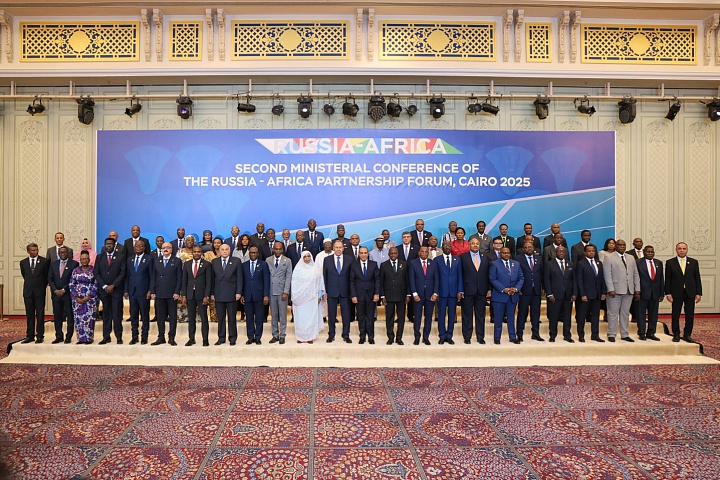
By Kestér Kenn Klomegâh
At the end of an extensive consultation with African foreign ministers, Russian Foreign Minister, Sergey Lavrov, has emphasized that Moscow would advance its economic engagement across Africa, admittedly outlining obstacles delaying the prompt implementation of several initiatives set forth in Strategic Action Plan (2023-2026) approved in St. Petersburg during the Russia-Africa Summit.
The second Ministerial Conference, by the Russian Foreign Ministry with support from Roscongress Foundation and the Arab Republic of Egypt, marked an important milestone towards raising bilateral investment and economic cooperation.
In Cairo, the capital city of the Arab Republic of Egypt, Lavrov read out the final resolution script, in a full-packed conference hall, and voiced strong confidence that Moscow would achieve its strategic economic goals with Africa, with support from the African Union (AU) and other Regional Economic blocs in the subsequent years. Despite the complexities posed by the Russia-Ukraine crisis, combined with geopolitical conditions inside the African continent, Moscow however reiterated its position to take serious steps in finding pragmatic prospects for mutual cooperation and improve multifaceted relations with Africa, distinctively in the different sectors: in trade, economic and investment spheres, education and culture, humanitarian and other promising areas.
The main event was the plenary session co-chaired by Russian Foreign Minister Sergey Lavrov and Egyptian Minister of Foreign Affairs, Emigration, and Egyptians Abroad Bashar Abdelathi. Welcome messages from Russian President Vladimir Putin and Egyptian President Abdelhak Sisi were read.
And broadly, the meeting participants compared notes on the most pressing issues on the international and Russian-African agendas, with a focus on the full implementation of the Russia-Africa Partnership Forum Action Plan for 2023-2026, approved at the second Russia-Africa Summit in St. Petersburg in 2023.
In addition, on the sidelines of the conference, Lavrov held talks with his African counterparts, and a number of bilateral documents were signed. A thematic event was held with the participation of Russian and African relevant agencies and organizations, aimed at unlocking the potential of trilateral Russia-Egypt-Africa cooperation in trade, economic, and educational spheres.
With changing times, Africa is rapidly becoming one of the key centers of a multipolar world order. It is experiencing a second awakening. Following their long-ago political independence, African countries are increasingly insisting on respect for their sovereignty and their right to independently manage their resources and destiny. Based on these conditions, it was concluded that Moscow begins an effective and comprehensive work on preparing a new three-year Cooperation and Joint Action Plan between Russia and Africa.
Moreover, these important areas of joint practical work are already detailed in the Joint Statement, which was unanimously approved and will serve as an important guideline for future work. According to reports, the Joint Statement reflects the progress of discussions on international and regional issues, as well as matters of global significance.
Following the conference, the Joint Statement adopted reflects shared approaches to addressing challenges and a mutual commitment to strengthening multifaceted cooperation with a view to ensuring high-quality preparation for the third Russia-Africa Summit in 2026.
On December 19-20, the Second Ministerial Conference of the Russia-Africa Partnership Forum was held in Cairo, Egypt. It was held for the first time on the African continent, attended by heads and representatives of the foreign policy ministries of 52 African states and the executive bodies of eight regional integration associations.
World
TikTok Signs Deal to Avoid US Ban

By Adedapo Adesanya
Social media platform, TikTok’s Chinese owner ByteDance has signed binding agreements with United States and global investors to operate its business in America.
Half of the joint venture will be owned by a group of investors, including Oracle, Silver Lake and the Emirati investment firm MGX, according to a memo sent by chief executive, Mr Shou Zi Chew.
The deal, which is set to close on January 22, 2026 would end years of efforts by the US government to force ByteDance to sell its US operations over national security concerns.
It is in line with a deal unveiled in September, when US President Donald Trump delayed the enforcement of a law that would ban the app unless it was sold.
In the memo, TikTok said the deal will enable “over 170 million Americans to continue discovering a world of endless possibilities as part of a vital global community”.
Under the agreement, ByteDance will retain 19.9 per cent of the business, while Oracle, Silver Lake and Abu Dhabi-based MGX will hold 15 per cent each.
Another 30.1 per cent will be held by affiliates of existing ByteDance investors, according to the memo.
The White House previously said that Oracle, which was co-founded by President Trump’s supporter Larry Ellison, will license TikTok’s recommendation algorithm as part of the deal.
The deal comes after a series of delays.
Business Post reported in April 2024 that the administration of President Joe Biden passed a law to ban the app over national security concerns, unless it was sold.
The law was set to go into effect on January 20, 2025 but was pushed back multiple times by President Trump, while his administration worked out a deal to transfer ownership.
President Trump said in September that he had spoken on the phone to China’s President Xi Jinping, who he said had given the deal the go ahead.
The platform’s future remained unclear after the leaders met face to face in October.
The app’s fate was clouded by ongoing tensions between the two nations on trade and other matters.
World
United States, Russia Resolving Trade Issues, Seeking New Business Opportunities
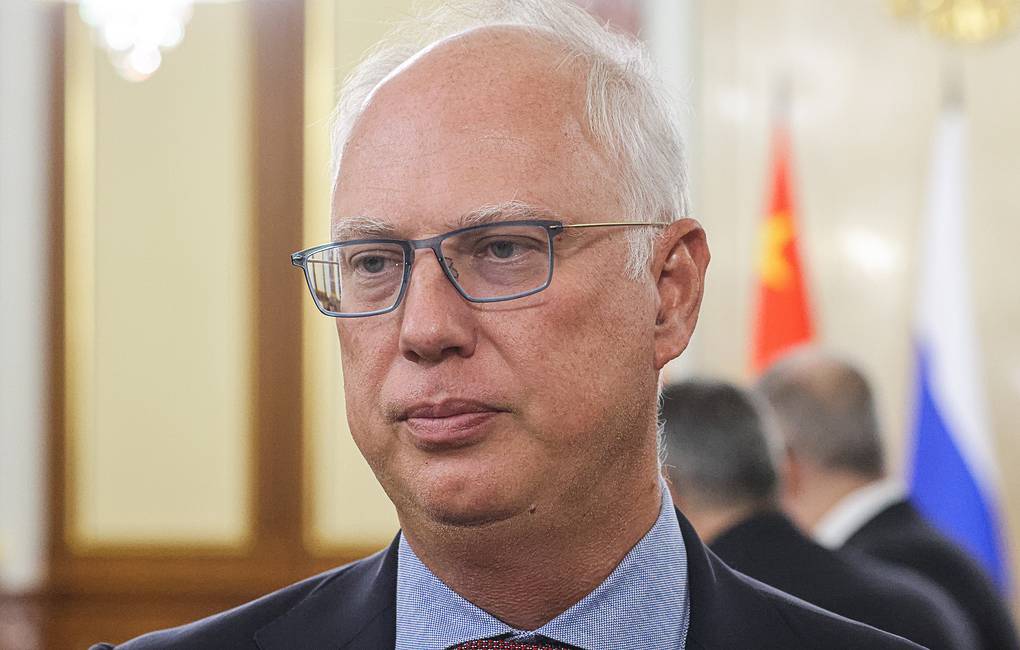
By Kestér Kenn Klomegâh
Despite the complexities posed by Russia-Ukraine crisis, United States has been taking conscious steps to improve commercial relations with Russia. Unsurprisingly, Russia, on the other hand, is also moving to restore and normalise its diplomacy, negotiating for direct connections of air-routes and passionate permission to return its diplomats back to Washington and New York.
In the latest developments, Kirill Dmitriev, Chief Executive Officer of the Russian Direct Investment Fund (RDIF), has been appointed as Russian President’s Special Envoy to United States. This marked an important milestone towards raising bilateral investment and economic cooperation. Russian President Vladimir Putin tasked him to exclusively promote business dialogue between the two countries, and further to negotiate for the return of U.S. business enterprises. According to authentic reports, United States businesses lost $300+ bn during this Russia-Ukraine crisis, while Russia’s estimated 1,500 diplomats were asked to return to Moscow.
Strategically in late November 2025, the American Chamber of Commerce in Russia (AmCham) has awarded Kirill Dmitriev, praised him for calculated efforts in promoting positive dialogue between the United States and Russia within the framework decreed by President Vladimir Putin. Chief Executive Officer of Russian Direct Investment Fund (RDIF) Kirill Dmitriev is the Special Representative of the Russian President for Economic Cooperation with Foreign Countries. Since his appointment, his primary focus has been on United States.
“Received an American Chamber of Commerce award ‘For leadership in fostering the US-Russia dialogue,’” Dmitriev wrote on his X page, in late November, 2025. According to Dmitriev, more than 150 US companies are currently operating in Russia, with more than 70% of them being present on the Russian market for over 25 years.
In addition, Chamber President Sergey Katyrin and American Chamber of Commerce in Russia (AmCham) President Robert Agee have also been discussing alternatives pathways to raise bilateral business cooperation. Both have held series of meetings throughout this year, indicating the the importance of sustaining relations as previously. Expectedly, the Roscongress Foundation has been offered its platforms during St. Petersburg International Economic (SPIEF) for the American Chamber of Commerce (AmCham).
On December 9, Sergey Katyrin and Robert Agee noted that, despite existing problems and non-economic obstacles, the business communities of Russia and the United States proceed from the necessity of maintaining professional dialogue. Despite the worsening geopolitical conditions, Sergey Katyrin and Robert Agee noted the importance of preserving stable channels of trade and pragmatic prospects for economic cooperation. These will further serve as a stabilizing factor and an instrument for building mutual trust at the level of business circles, industry associations, and the expert community.
The American Chamber of Commerce (AmCham) will be working in the system of the Chamber of Commerce and Industry (CCI) in the Russian Federation, which currently comprises 57,000 legal entities, 130 regional chambers and a combined network of representative offices covering more than 350 points of presence.
According to reports obtained by this article author from the AmCham, promising sectors for Russian-American economic cooperation include healthcare and the medical industry, civil aviation, communications/telecom, natural resource extraction, and energy/energy equipment. The United States and Russia have, more or less, agreed to continue coordinating their work to facilitate the formation of a more favorable environment for Russian and American businesses, reduce risks, and strengthen business ties. Following the American-Russian Dialogue, a joint statement and working documents were adopted.
-

 Feature/OPED6 years ago
Feature/OPED6 years agoDavos was Different this year
-
Travel/Tourism9 years ago
Lagos Seals Western Lodge Hotel In Ikorodu
-

 Showbiz3 years ago
Showbiz3 years agoEstranged Lover Releases Videos of Empress Njamah Bathing
-

 Banking7 years ago
Banking7 years agoSort Codes of GTBank Branches in Nigeria
-

 Economy3 years ago
Economy3 years agoSubsidy Removal: CNG at N130 Per Litre Cheaper Than Petrol—IPMAN
-

 Banking3 years ago
Banking3 years agoFirst Bank Announces Planned Downtime
-

 Banking3 years ago
Banking3 years agoSort Codes of UBA Branches in Nigeria
-

 Sports3 years ago
Sports3 years agoHighest Paid Nigerian Footballer – How Much Do Nigerian Footballers Earn






